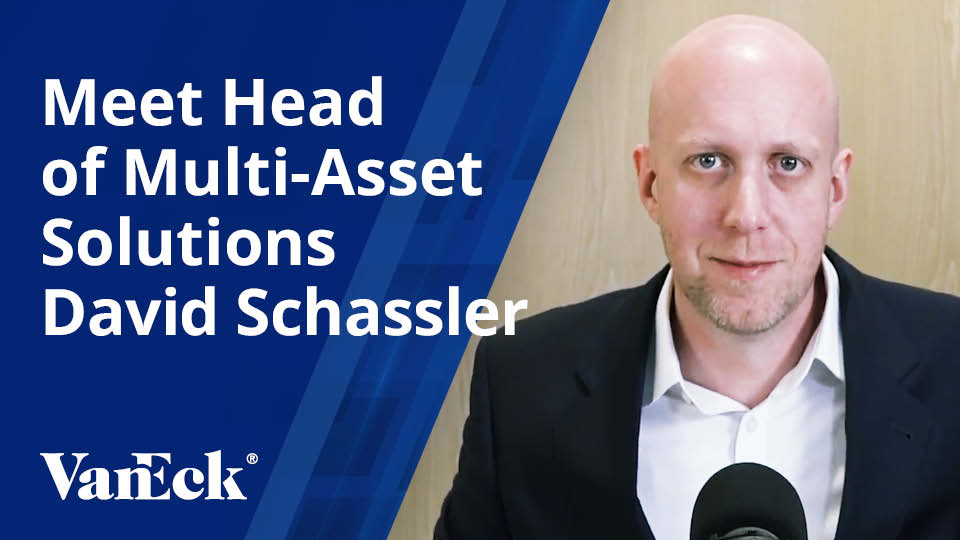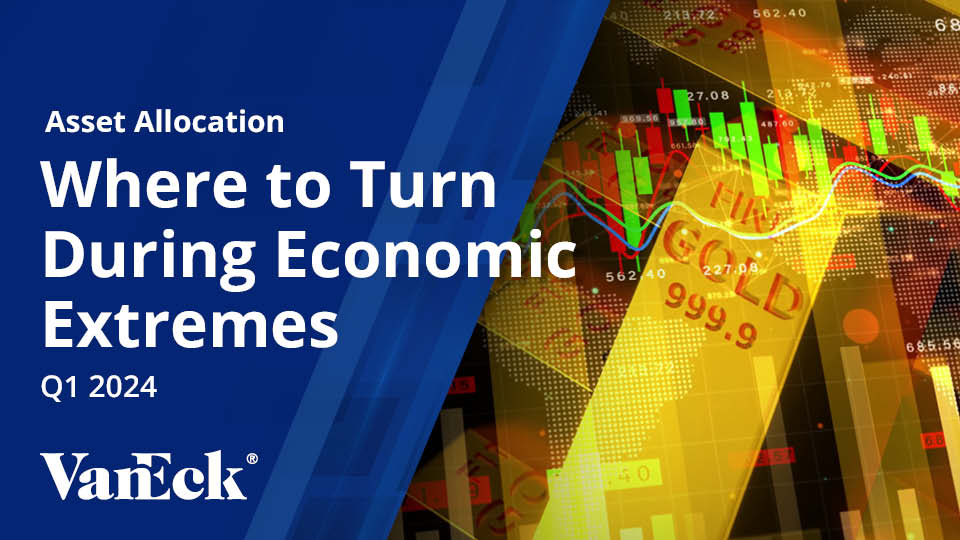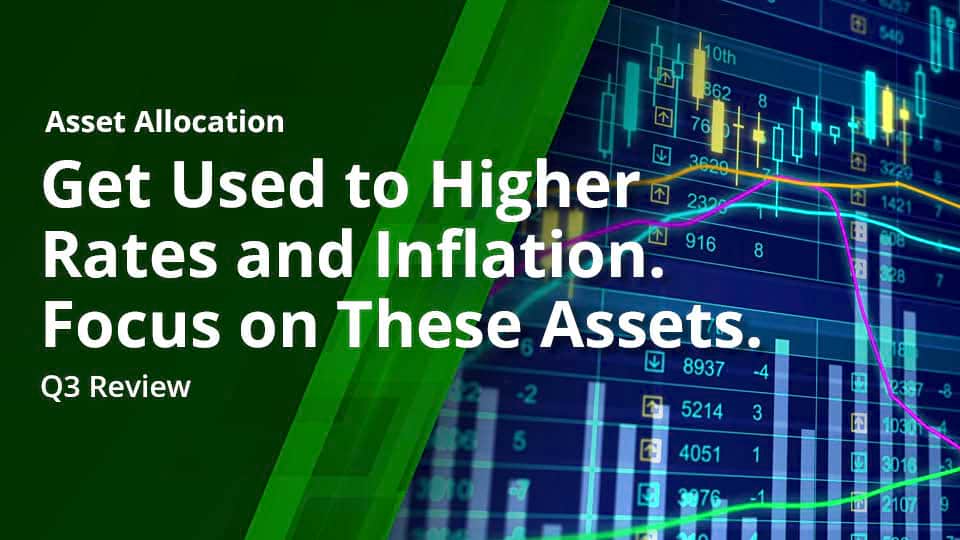Hanging with the Soft Crowd—For Now
February 22, 2024
Read Time 6 MIN
There are people that have successfully predicted recessions. But few have done it twice. Does the inability to time market cycles stop Wall Street from trying? Of course not! Will that stop us? Definitely not.
We believe that a mild recession in the first half of the year is likely. The chart below demonstrates that, on average, recessions typically start six months after interest rates peak. The Fed Funds rate topped out at 5.3% in August 2023, which puts a recession on track for either the first or second quarter.
Recessions Follow 6 Months After Interest Rates Peak
Source: Bloomberg.
The depth of the next recession is more difficult to predict. We have front row seats to the collision of higher interest rates, inflation, slowing growth, geopolitical chaos, and massive technological innovation (e.g., AI). The potential of AI cannot be ignored. This technology, similarly, to the creation of the internet, has the potential to truly disrupt society and drive efficiencies and innovation throughout the economy. We were in the hard landing camp last year and expected the recession to have already started. We are happy to have been wrong about that. The resiliency of the U.S. economy has been surprising. We’ll be optimists and side with the soft-landing crowd for now, but a hard landing is still a real possibility.
A soft landing, in our view, is a contraction in GDP of less than 1%. The level of interest rates is the largest factor determining the timing and severity of the next recession. We believe that, when pushed, the Fed will pivot and lower interest rates. Better the devil you know (fight the recession) than the devil you don’t (keep fighting inflation that may or may not materialize). Besides, the soft-landing crowd is a livelier and more fun group of people. The no-landing crowd nailed it last year, but the clock is ticking. Recessions eventually occur and are a healthy part of the economic cycle.
Jerome Powell is in a pickle. If he takes his foot off the brakes of the economy too soon and inflation re-emerges, then his face will appear on the wall of shame next to Arthur Burns – the last Fed chair who failed to stop inflation. Alternatively, if Mr. Powell were to become the first to curb inflation without engineering a hard landing, then history will likely forgive his previous transgressions and look kindly at his time as Chair.
We have studied and written extensively on inflation. The good news about inflation is that it doesn’t occur often. The bad news about inflation is that once it does occur, it is very hard to control. We are in the camp that inflation will remain persistently elevated (3-5%), on average, for an extended period (think in terms of years, not months) and re-accelerate (above 5%) once the Fed loosens its policies. The Labor Department reported that consumer prices rose 3.1% in January. Economists surveyed by FactSet were expecting an increase of 2.9%. This was unwelcome news for the market, which has been hoping for a quick pivot in rates. Inflation is a problem. Hope is not a solution.
Equities: Narrow Leadership Unlikely to Last in Long Run
We are neutral on equities. Recent strength in equity prices, high interest rates and a looming recession are typically not the stuff of which strong equity markets are made. However, the resiliency of the consumer and the strength of corporate earnings growth, particularly in the technology sector, should caution against betting that this bull will stop running.
The narrow leadership of the Magnificent Seven (MSFT, META, AAPL, AMSN, GOOG, NVDA, and TSLA) is the talk of the town. Will these stocks continue to lead the market higher? To answer that question, we studied the top 10 performing stocks in decade long windows to ascertain whether they typically continue to outperform. Historically, the answer is a lot like flipping a coin, or slightly less than 50% to be exact.
Do Top 10 S&P 500 Performers in a Decade Outperform Over the Next Decade? Flip a Coin
Source: Bloomberg.
Back to the original question: do we think that the Magnificent Seven are likely to continue to outperform? Short-term: maybe. Long-term: unlikely. Investors with significant exposure to these individual holdings should consider recycling some of those recent gains into a more diversified approach. Check out the VanEck Morningstar Wide Moat ETF (MOAT) and the VanEck Semiconductor ETF (SMH). Please excuse the shameless plugs. It was too easy.
Fixed Income: Take the Money and Run
We are bullish on fixed income. A bird in the hand (current yield) is worth two in the bush (potential price appreciation on equities). Investors are finally getting compensated to lend money again, so let’s take advantage of it!
The chart below demonstrates that, historically, when the yields on non-investment grade bonds are 7.6% or higher (current rate levels based on yield-to-worst), investors have earned significantly above average returns (11% versus the long-term return of 8.5%) in a highly consistent fashion (83.5% of rolling 12 month windows experienced positive returns).
High Yield Bond Returns Elevated Above 7.6% Yield Threshold
Bloomberg U.S. Corporate High Yield Bond Index
Source: Bloomberg. Index performance is not illustrative of fund performance. It is not possible to invest directly in an index.
Fixed income is not without its risks. That is especially true for high yield. However, yields are juicy and that offers a lot of protection against credit and duration risk factors.
Real Assets: Gold’s Time to Shine
We are bullish on real assets. More specifically, we are bullish on gold bullion. What role does gold play in a portfolio? It acts as a hedge against inflation and volatility. Do we expect persistently elevated inflation and higher volatility? Absolutely!
The future path of interest rates is a hotly debated topic. As you can see in the chart below, big moves in interest rates, both upward and downward, have historically been good for gold prices. This makes intuitive sense because interest rates have risen significantly during inflationary spikes and fallen during recessions – both of which cause uncertainty and increase the relative attractiveness of gold.
Interest Rate Fluctuations Boost Gold Prices Amid Uncertainty
Gold Performance Across Interest Rate Regimes: 1974-Present
Source: Bloomberg. Past performance is no guarantee of future results.
Conclusion: Consider HY Fixed Income and Gold
This has been a challenging period to manage money. The economy has shifted from one extreme to another and, as a result, we now find ourselves in a high interest rate regime relative to recent history. The impact of higher interest rates has not been fully realized and that adds to the cloud of uncertainty. And, to compound the frustration, the relative performance of equities can be explained by the weightings of a handful of mega cap growth stocks.
The good news is that extreme environments create opportunities. In our view, higher yielding fixed income and gold are two such opportunities.
Stay diversified and wait for the fat pitches.
To receive more Asset Allocation insights, sign up in our subscription center.
Related Topics
Related Insights
February 28, 2024
December 19, 2023
DISCLOSURES
This is not an offer to buy or sell, or a recommendation to buy or sell any of the securities, financial instruments or digital assets mentioned herein. The information presented does not involve the rendering of personalized investment, financial, legal, tax advice, or any call to action. Certain statements contained herein may constitute projections, forecasts and other forward-looking statements, which do not reflect actual results, are for illustrative purposes only, are valid as of the date of this communication, and are subject to change without notice. Actual future performance of any assets or industries mentioned is unknown. Information provided by third party sources are believed to be reliable and have not been independently verified for accuracy or completeness and cannot be guaranteed. VanEck does not guarantee the accuracy of third party data. The information herein represents the opinion of the author(s), but not necessarily those of VanEck or its other employees.
Bloomberg US Corporate High Yield Bond Index measures the USD-denominated, high yield, fixed-rate corporate bond market.
S&P 500 Index consists of 500 widely held common stocks covering industrial, utility, financial and transportation sector.
Index returns are not illustrative of fund returns. It is not possible to invest directly in an index.
An investment in the VanEck Morningstar Wide Moat ETF (MOAT) may be subject to risks which include, among others, risks related to investing in equity securities, consumer discretionary sector, health care sector, industrials sector, information technology sector, financials sector, medium-capitalization companies, market, operational, high portfolio turnover, index tracking, authorized participant concentration, no guarantee of active trading market, trading issues, passive management, fund shares trading, premium/discount risk and liquidity of fund shares, non-diversification and index-related concentration risks, all of which may adversely affect the Fund. Medium-capitalization companies may be subject to elevated risks.
An investment in the VanEck Semiconductor ETF (SMH) may be subject to risks which include, among others, risks related to investing in the semiconductor industry, equity securities, special risk considerations of investing in Taiwanese issuers, foreign securities, emerging market issuers, foreign currency, depositary receipts, medium-capitalization companies, issuer-specific changes, market, operational, index tracking, authorized participant concentration, no guarantee of active trading market, trading issues, passive management, fund shares trading, premium/discount risk and liquidity of fund shares, non-diversified, and index-related concentration risks, all of which may adversely affect the Fund. Emerging market issuers and foreign securities may be subject to securities markets, political and economic, investment and repatriation restrictions, different rules and regulations, less publicly available financial information, foreign currency and exchange rates, operational and settlement, and corporate and securities laws risks. Medium-capitalization companies may be subject to elevated risks.
Investing involves substantial risk and high volatility, including possible loss of principal. An investor should consider the investment objective, risks, charges and expenses of a Fund carefully before investing. To obtain a prospectus and summary prospectus, which contain this and other information, call 800.826.2333 or visit vaneck.com. Please read the prospectus and summary prospectus carefully before investing.
© Van Eck Securities Corporation, Distributor, a wholly-owned subsidiary of Van Eck Associates Corporation.
Related Funds
DISCLOSURES
This is not an offer to buy or sell, or a recommendation to buy or sell any of the securities, financial instruments or digital assets mentioned herein. The information presented does not involve the rendering of personalized investment, financial, legal, tax advice, or any call to action. Certain statements contained herein may constitute projections, forecasts and other forward-looking statements, which do not reflect actual results, are for illustrative purposes only, are valid as of the date of this communication, and are subject to change without notice. Actual future performance of any assets or industries mentioned is unknown. Information provided by third party sources are believed to be reliable and have not been independently verified for accuracy or completeness and cannot be guaranteed. VanEck does not guarantee the accuracy of third party data. The information herein represents the opinion of the author(s), but not necessarily those of VanEck or its other employees.
Bloomberg US Corporate High Yield Bond Index measures the USD-denominated, high yield, fixed-rate corporate bond market.
S&P 500 Index consists of 500 widely held common stocks covering industrial, utility, financial and transportation sector.
Index returns are not illustrative of fund returns. It is not possible to invest directly in an index.
An investment in the VanEck Morningstar Wide Moat ETF (MOAT) may be subject to risks which include, among others, risks related to investing in equity securities, consumer discretionary sector, health care sector, industrials sector, information technology sector, financials sector, medium-capitalization companies, market, operational, high portfolio turnover, index tracking, authorized participant concentration, no guarantee of active trading market, trading issues, passive management, fund shares trading, premium/discount risk and liquidity of fund shares, non-diversification and index-related concentration risks, all of which may adversely affect the Fund. Medium-capitalization companies may be subject to elevated risks.
An investment in the VanEck Semiconductor ETF (SMH) may be subject to risks which include, among others, risks related to investing in the semiconductor industry, equity securities, special risk considerations of investing in Taiwanese issuers, foreign securities, emerging market issuers, foreign currency, depositary receipts, medium-capitalization companies, issuer-specific changes, market, operational, index tracking, authorized participant concentration, no guarantee of active trading market, trading issues, passive management, fund shares trading, premium/discount risk and liquidity of fund shares, non-diversified, and index-related concentration risks, all of which may adversely affect the Fund. Emerging market issuers and foreign securities may be subject to securities markets, political and economic, investment and repatriation restrictions, different rules and regulations, less publicly available financial information, foreign currency and exchange rates, operational and settlement, and corporate and securities laws risks. Medium-capitalization companies may be subject to elevated risks.
Investing involves substantial risk and high volatility, including possible loss of principal. An investor should consider the investment objective, risks, charges and expenses of a Fund carefully before investing. To obtain a prospectus and summary prospectus, which contain this and other information, call 800.826.2333 or visit vaneck.com. Please read the prospectus and summary prospectus carefully before investing.
© Van Eck Securities Corporation, Distributor, a wholly-owned subsidiary of Van Eck Associates Corporation.




